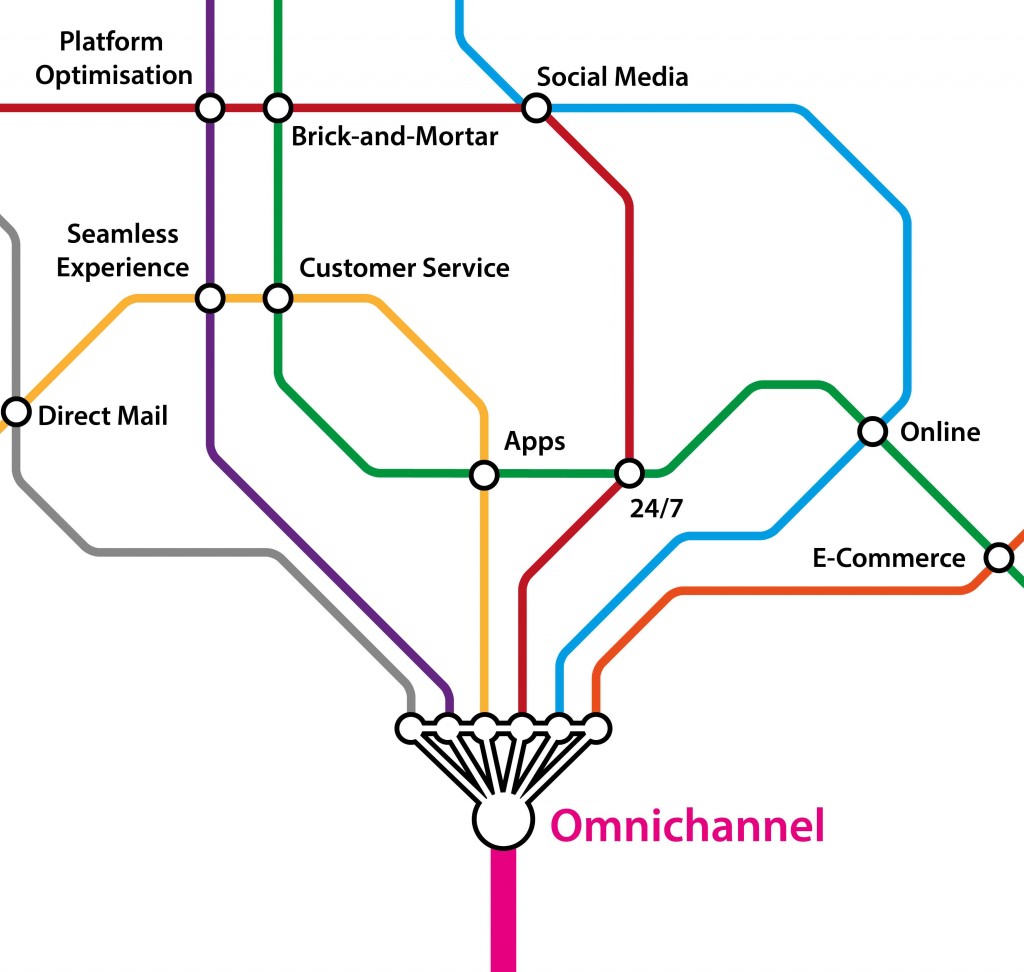Google+ Gets a Refresh, Again!
Well, what a year it has been for Google+! The widely criticised online platform, which truthfully, was originally created to compete with Facebook, has faced so many twists and turns that the product we see today is vastly different. With Google Photos pulling free from G+ around May this year (and with big success) and with comments on YouTube now only appearing in YouTube, not G+ too, as of July this year, the G+ we see today is much less cluttered, simplified and hopefully, easy and intuitive to use.
Your Google AdWords over this Holiday Season
So, you’re looking at shutting up shop and enjoying some much needed time away, or time at home to finally attack that DIY home project that’s been sitting there since last Christmas? Sounds like bliss.
Except your competitors are out there, circling like the proverbial wolves they are, eyeing off your position gained through carefully constructed Ad Rank. They’re waiting, wanting, salivating for that moment when, as the bane of their business existence, you turn off your AdWords account for a few weeks so they can pounce.
Okay, maybe it isn’t quite as sinister as I made that sound. Without knowledge of Google Ad Rank, they would probably have no idea that they are ‘proverbially circling’. That doesn’t mean the outcome will be any different. If you turn off your AdWords and they move up in Ad Rank, when you turn it back on, you have to battle them to regain it. That costs money on two levels; the first being you have to outbid them for the position that you once held. Two, if that position was where you converted, in the time when you aren’t in that position, you aren’t converting.
I understand that this is the time of year when you would like to have every dollar you can possibly have in your back pocket. Presents, holidays, fun and merriness all cost a pretty penny and seeing as though no one is answering the phone at the office, I can see why you think turning off the campaign would seem like a good option. However, here are a couple of ideas to alleviate some of these concerns we talked about earlier, without affecting your Google Ad Rank:
- Drop your budget to allow one click a day. This will tell Google that you are still in the running, which will maintain the Ad Rank.
- If you are in a service industry, such as plumbing or electrical, include in your ads ‘Emergency Only’ so the person who sees the ads understands you are going to charge extra. That way if they click and call, you can charge a much higher rate than normal.
- If you are in some sort of a supply industry, be sure to advise people to “Order Online for Priority Delivery”. On the Landing Page, let people know that an email order now will ensure they will be the first off the rank when the company returns to trade after the holiday.
You can see how these maintain your position on AdWords and even assist in building a pipeline for your return.
During this time there are so many awesome things that can be done to the account, which is why I enjoy this time of year. Search Term analysis, the creation of Ad Groups with specific exact match keywords, setting up Google Tag Manager, Analytics and Remarketing, building the Remarketing list, testing of new and cheaper keywords, trend analysis… the list goes on.
If you already have Google Tag Manager and Analytics set up, this is even better. These tools allow us to think about setting up goals, goal funnels, e-commerce tracking, analysing the data, working on a strategy for the historically slow months, and reviewing the need for increasing the budget in the busy months.
For many companies supplying a product, Christmas is an extremely busy time of the year, so increase the budget, ensure that Google Shopping ads are optimised, and make sure Christmas Specials are prepared months before (as in right now)! The ‘lull’ some companies experience after the Christmas period is often offset by the increase in sales in the lead up to Christmas, be sure that you are prepared now to take full advantage. Your Account Driver is gearing up for Christmas as we speak, preparing strategies to accentuate your plans online, so get on the phone with us here at Get More Traffic on 1300 332 256 and talk to them to work out a plan!
The Wonderland of #Google Tag Manager
You may have come across Google Analytics and Google Tag Manager during your foray into the world of Conversion Tracking. If that’s the case, then this blog will probably have you salivating in anticipation for this instalment by the Bearded Dragon (TM), me.
If you’ve already put the Conversion Tracking code on your “thank you” page, excellent, I have taught you well, young Padawan, you will go far. If you haven’t, I’m not mad, just disappointed. There is hope to redeem yourself, though.
Go to www.google.com/tagmanager while using your Google Account and create an account (yes, at present there is a lot of account creation; an issue I’m sure Google is working on). It’s relatively simple, once you’ve created the Tag Manager account, it provides a piece of code that goes on every page of your website, just after the opening <body> tags.
If you have difficulty, you probably should have your web developer put it on. Don’t feel bad, there are so many different types of websites out there that the simple instructions above can’t service them all.
Google Tag Manager houses other pieces of Google code, allowing you to add Analytics, Remarketing and our old friend, Conversion Tracking, without having the code of your website looking like an extended version of War and Peace written in Wingdings.
So now we have Google Tag Manager installed, I’m going to bypass the fiddly details of installing Analytics, Remarketing, and Conversion Tracking into the Tag Manager, despite it being one of the most exciting things I do. There’s information out there, but I want to talk about something more important to a business owner; the analysis. Let’s say that your Online Marketing Magician waves his wand in a SFW manner and suddenly your GTM is loaded with all the pieces of code, including Analytics. You can see real time tracking of people viewing your site, but you notice that while there are many people visiting, none are contacting you. It puzzles you, but you understand that the internet is subject to trends and one day is not able to represent any meaningful data.
You return in a week, because you’ve read somewhere, like here, right now, that allowing data to accumulate over a decent period of time gives a better understanding of what is happening in the website. Here are a few simple tips for initially reviewing data in Google Analytics:
- Bounce Rate.
If the bounce rate is above 60%, something is awry on the site. I like to see a 40% or lower Bounce Rate. Maybe your clients are being greeted with a wall of text; maybe they aren’t being greeted with enough information. This is one of my first indicators of whether a website is ‘working’ and is relevant to the interests of the person who has found your page.
- Time Spent on Site + Pages Visited.
If people are visiting many pages and spending many minutes on a page, your website MUST be working, right? Not necessarily, especially if they jump off your site after doing their research without leaving their contact details. It is possible to gain these clients back using a Remarketing strategy, however, I would first look into why they are spending so much time and not contacting you. Maybe your website is a ‘brochure site’, giving people all the information they need to make a decision. If you want people to get in touch with you, you may need to revamp your website to be a ‘sales page’, in that it provides just enough interest to whet the appetite and leave them begging for more, where the only way to find out more is to contact you.
3. Channels
This is where your traffic is coming from and can indicate what advertising strategy is working best for you.
- Goals!
Like Conversion Tracking, only more in depth and across all of your channels. You can set up Goals and Goal Funnels, giving an insight into the behaviour of people on the site when it comes to getting in touch with you. If you are an e-commerce site, Goal Funnels may display to you the choke point in your sales process. Some of my clients have complained that they were getting many abandoned shopping carts, but after taking a look in Analytics we have found the drop off point and determined there was a glitch, a bug or even something as simple as requiring too much information of the potential client.
There are so many factors that influence the behaviour of people on the internet. Analysing data over weeks, months, and years will assist in figuring out the right strategy to catch new clients. Install Tag Manager, as I’ve recommended, as the possibilities for Tracking are growing within it. An as always, if you’re keen to get started sooner rather than later, then get in touch with the team here at Get More Traffic on 1300 332 256 today.
Mobile Technology, But Not As You Know It!
The suffix ‘-near me’ is becoming more prevalent in search queries on Google, having experienced a significant increase in the last year alone. As the world becomes more and more comfortable with the fact that the device in their pockets, and more importantly, the websites that they visit are becoming better to navigate on mobile devices, we will continue to see better and more targeted results from Google. Google is putting a lot of research and development into responding to more ‘human’ enquiries. Humans don’t talk in ‘keywords’; they ask questions, make statements, and the more Google is able to recognise these, the more in-depth its returning results will be.
Think about this, you’re driving down the road listening to the music on your device connected wirelessly through your car stereo (this alone is a ‘future is now’ scenario) when the music dims and your GPS navigation reminds you to turn left. As it does this, it also mentions that there is a sale on at that store you like on the same street. Intrigued, you pull up outside said store and wander in. You find that item which has been sitting on your ‘want’ list for quite some time and purchase it.
You jump back in the car with your shiny new item, keen to get home to test it out. You make your way to your final destination of which you have forgotten where you were going. You ask your phone, “where was I going?” and it replies, “to the supermarket for ingredients for the dinner party you’re throwing for your friends”.
You arrive at the supermarket – what are you going to buy? You speak into your phone, “what would you suggest for a dinner party of 15 friends that doesn’t include coriander as an ingredient?” and your phone supplies you with several options. You choose one and log in to the supermarket’s website, pushing your order direct. You saunter up to the counter and pay for your groceries with your phone at the mobile PayPoint. There’s a beep and you’re on your way home.
Believe it or not, this type of mobile device advanced development is 100% in the works. Google has purchased apps to integrate with Maps that will allow companies to push specials to you *as you approach their venue*, and you’ll be able to talk to your phone like you would to a human. Even omni-channel experiences are very much already here in our major department stores. Search is going to change as we know it and it is vital that your business is adaptive and fluid enough to be able to handle that change. Get in touch with Get More Traffic on 1300 332 256.
Are Myer overdue with their ‘New Myer’ strategy, or just fashionably late?
Myer have recently announced their new ‘New Myer’ strategy, with emphasis on omni-channel pathways and marketing initiatives to leverage relevant customer behaviours in the face of strong digital competition from retail rivals at home and overseas. But have Myer come to the game too late? With a predicted $600 million, five year transformation agenda, including $200 million into omni-channel capabilities, the new strategy undoubtedly takes on-board the changing space of consumer spending and behaviour. Though when taking a look at competitors overseas, it seems to be a serious game of catch-up.
There is an ongoing trend which is mirrored across many industries in Australia when it comes to successfully investing in technology and digital transformations. While Australian’s are some of the fastest consumers of new digital technologies, Australian businesses are slow on the uptake. It’s very much a case of ‘let’s wait and see just how much of an impact this will actually have’ and commonly, businesses finding themselves left far behind due to exactly that.
Modern retail is an online and offline journey, but it is increasingly apparent that if it’s not online, then it may as well not exist, particularly when it comes to ‘fashion’. In 2014 the stark truth is that Australian retail giants Myer and David Jones could only account online sales for approximately 2% of total sales. For those with their eyes on the ball, the massive opportunity this presents small to medium sized businesses in Australia is huge. For those which already have a good online E-commerce presence, then the customers are there for the taking. For those who are coming to the realisation that now is the time to move, they can guarantee that it won’t take five years and $600 million to establish themselves online.
There are exceptions to Myer’s blunder. Many businesses saw the writing on the wall after the GFC and realised that innovation was needed to pick up business again. With technology producing smart mobile devices and companies like Google driving online relevancy, data-driven marketing has reshaped the way businesses must communicate and connect with their customers. In Australia, brands such as Country Road and Lorna Jane are shining examples of what positive omni-channel experiences can do not just for revenue, profit and growth, but brand loyalty and advocacy.
So in the face of retail globalisation, digital disruption and consumer expectations, Myer’s new strategy, while a welcome sight, will have to wait a while to see the fruits of its harvest. With the busy Christmas shopping season quickly approaching, and with Myer’s notorious online system outage one week out from Christmas Day in 2014, consumers and industry watchers will have to see whether small to medium businesses will take advantage of the online opportunity and good fortune. If you’re looking to update your e-Commerce strategy in time for the Holiday Season this year, then get in touch with Get More Traffic today on 1300 332 256.
What Small Business Can Learn From Big Sport
The business of sport is big business. Foxtel has recently announced a dedicated channel for its coverage of the 2015 US Open Tennis. Touted as the “channel that never sleeps in the city that never sleeps”, viewers can get their US Open fix anytime of the day or night. It makes sense as well; with the staggering rise in ‘smart’ mobile devices and how people are consuming sports content, the sporting realm is no longer only compatible with modes such as television and radio. Online streaming, social media and interactive platforms now mean people can access their favourite sports teams, players and codes to suit their needs and lifestyles.
The masses are not the only ones taking advantage of this new digital era. Professional sportspeople, such as Serena Williams, are learning to leverage digital media trends through the use of social media, allowing them to clout their professional sporting profiles for positive (and sometimes negative) public relations. As well as keeping in contact with their fans and to promote endorsed products through a growing number of extravagant sponsorships, the online attention and traffic this garners is fuel for their professional careers. Social media use during live sporting events is increasingly becoming a stand-alone drawcard.
Online ‘chatter’ means that people’s demands for content are increasing. Live predictions and historical statistics build atmosphere and momentum, and with the US Open drawing a global crowd, easily accessible platforms for people to enhance their online experiences and consume the content they want are in demand. As one of the official sponsors of the US Open, IBM offers fans historical and real-time statistics, live video and opportunities to engage with players. These deeper insights though can offer lessons in how Australian businesses can communicate with their customers if they learn how to leverage online data to transform how they perform. Sport is a business after all, and there is money to be made.
The ease of accessing this type of content through mobile devices has also led to the rise in popularity of mobile sports gambling sites. This ongoing shift in online gambling has also seen an increase in underage people partaking in online forms of wagering, especially due to the more liberal regulations which allow foreign companies to take advantage of Australia’s interactive betting sector. However there is a lesson here as well; with any new technology, no matter how beneficial and profitable it is, there is always a flipside. For small business owners, this can mean greater attention to cyber security measures while still leveraging the profitable outcomes of E-commerce initiatives.
Consumer demands for information ‘now’ are increasing and particularly while people are watching live sporting events, whether it is on their television or through a mobile streaming application. There is no longer only once screen in the room, and sports digital media is doing a phenomenal job of meeting consumers where they are, which means the lessons small to medium sized business owners can learn are countless. If you’re interested in attracting more traffic to your website, then you need to get in touch with us here at Get More Traffic, or call us on 1300 332 256.
Do You Even Know How to Google, Bro?
Years ago I worked for an Insurance Brokerage in their Marketing department. It was only a small firm and my position encompassed many varied tasks, with Internet marketing at the time being a small piece of the overall puzzle. How times have changed!
One day all the Brokers were invited by one of the major underwriters to go on one of those Adventure Races, you know the type, there’s clues hidden around the city and teams must find them in a race to be the first to find the final clue. Not being a broker, I was illegible to attend this event *frowny face*. Instead, I was entrusted with the far more important task of being the ‘eye in the sky’, the guy in the office that my team called to ask for help in regards to the clues. This was back in the days before smartphones were ubiquitous, betraying my advancing age.
I felt like I was a better looking Tom Arnold and they were the Arnold Schwarzenegger in True Lies; they’d relay information from the clues and I would go to task on Google, translating and decoding! Well, not really decoding, but it felt like I was decoding, considering I was able to completely deconstruct the clues easily and simply, by using a few simple tricks I’d picked up well before I’d even began my stellar career based solely in the online sector.
My team won, largely based off of my Google-fu. Now, I can’t remember the clues, we’re talking almost a decade ago, but there were certainly some Googling tactics I tried which brought home gold.
The first thing I tried for the first clue was to put inverted commas around the exact wording of the clue, so for example, ‘test’.
BOOM! I got the perfect result.
The second clue was harder. The inverted commas around the search terms didn’t immediately bring up the results I needed, as they were probably too general. I noticed that the results repeated another keyword that I didn’t want, so I placed a ‘-‘ ‘in front of that word, e.g., -word.
BAM! The third result was exactly what I needed, and my team were off and running (except George, who was, shall we say, a larger gentleman).
Again the phone call came through; the third clue was intimidating, even for an internet warlock like me. This one had me stumped, so I arranged four computer screens in front of me at my desk (because I’d seen it in Swordfish), none of them flat screen, only one of them working.
I cracked my knuckles and got down to business, the sweat on my brow dripping down my nose, my furrowed brow focusing my energy on the screen in front of me. My fingers began blurring as I tried a variety of techniques.
I searched for related words to the clue using ‘~’, as in: ~search
No match. The clock was ticking. A lightbulb struck, the clue might be missing some keywords in the phrase, so I tested out the theory by placing an asterisk between the words, like thus: Search * words
No luck. Time was running out.
I remembered briefly seeing something related in the newspaper (remember, this was back in the day when printed news was still a relevant thing) related to the clue, so I typed in the name of the newspaper’s website and the clue, hence: Site: clue
Success! Just in the nick of time, my team had received the final clue and was off to the finish line.
I was hailed as a hero that day on the abandoned floor of that Insurance Brokerage. I was by myself, but still…
Google has continued to develop little tricks or ‘hacks’ as I refer to them, hoping I am out of earshot of anyone in 4chan or Anonymous. In particular the rise of the social network has resulted in a number of additions to Google Searches that make it easier to find, such as:
- +username for a Google Plus page (put the + after it if looking for blood type).
- @username for a social tag.
- And, of course, the good old (new) #hashtag for trending topics.
If you’re looking for an item with a price, just put the name of the item and the price you’re looking for with the dollar sign: Item $XX
Or if you’re looking for a price range, place two periods between the numbers: Item $XX..XXY
There are some fun things you can do, too, like typing in ‘do a barrel roll’, or ‘askew’, both resulting in some amusing changes to the page. As a lover of language, it can translate, or define, be a thesaurus or give the etymology of any of the words you put in.
Who knew Googling is so much fun!
Ever since Global Network Navigator created the first clickable web ad in 1993 for Heller, Ehrman White & McAuliffe with a Click Through Rate of 44%, we’ve all developed a love/ hate relationship with Banner/Display/ Image ads on the Internet. I love them, you likely hate them.
You’re probably thinking, “why don’t you marry them, INSERT MYSTERY NAME HERE?” adding, “ner ner nerner ner ner”.
Firstly, we’re not in primary school anymore, so that was a little juvenile, but I get it, you’re letting off steam. And quite rightly, I imagine, after being bombarded by image ads stopping you from all the work or fun you want to do on the Internet, the combination beautifully realised reading this awesome piece of journalism.
Day in day out, they’re there, asking you to buy something, possibly after you’ve already bought that something, more likely after you’ve decided not to buy that something, and even more likely that you have no intention of ever buying, and you’re wondering why they would even show up in your daily travels through the Internetverse ™ (just made that up then).
It always amuses me when I see a text ad pop up on a website I’m viewing asking me if I “Have A Blocked Drain? Call the Sydney Blocked Drain Experts” when I’m in Brisbane and my landlord is my next door neighbour who happens to be a plumber. Entirely irrelevant to my needs, yet somehow this ad is floating on my radar.
Now, people will often point out that the Click Through Rate these days is nowhere near the heights of those original pop-up ads, in fact, they are a fraction of a fraction of what they were at stage one. And Google has admitted that only about half the ads served are actually viewed, in that many that register as an impression (showed on the screen) are actually ‘below the fold’, meaning the user must scroll down in order to see it. If half the ads aren’t being seen, we can effectively double the CTR, but I’m a linguist, not a statistician, so take that with a grain of salt. Also, when we are talking a CTR of 0.03, it’s much of a muchness.
You are probably thinking that this is actually proving your case that Display network marketing is terrible, but you’re wrong and I say this with authority. When Google Display network ads are targeted correctly, they can be a business’ greatest ally! I’m sure you’re aware of Remarketing, which is basically following people around the net with Image ads after they’ve viewed your website, you may not know how targeted they can actually be.
I had a mate recently tell me how much they despised the fact that they were being ‘followed’ by this company that they bought one product from, with offers on the same product they just purchased! I understand the annoyance and if only that company’s marketing team had created a Remarketing list for people who have purchased in order to sell accessories instead of the product they just bought, the ads may have been less annoying and more enticing.
There are a number of other Pop-Up avenues making a splash that actually do annoy me, such as the Pop-Up to subscribe on a website, or the Pop-Up to add additional food items to my already ridiculously long pizza order (but the annoyance in this case is the lack of willpower in saying no to Chocolate Lava Cakes).
This is the idea of immediate upselling and while it has its place, I find myself, particularly on my phone, becoming frustrated when I click the little ‘x’ to close it and my fat, chocolate-lava-cake-and-pizza-laden fingers accidentally bring up the exact thing I don’t want. This is more of an issue with a site’s mobile optimization, though.
In order to make sure you are not one of those that annoy their clients, you need a strategy. Display ads are not going away anytime soon and I foresee a drastic change to how they are distributed as people become savvier with the features that are already available, and as features are added.
I have several examples of a Display campaign that works that isn’t even a Remarketing campaign. In particular, the targeting of Display ads to individual relevant forums and websites in order to spread awareness of a new product, or a new feature, can result in some of the best conversions a company has ever seen, especially if the product is an innovation of a current, widely used model. These campaigns, while the CTR may still be low, have incredibly high Conversion Rates.
And that’s what it is all about, increasing your Conversion Rate. So speak with us today at Get More Traffic on 1300 332 256 to see what we can do for you and your business!
Online Marketing Best Practices
I love it when a client recognises that someone is trying to pull a number on them, it validates the time I have invested explaining how the AdWords system operates to them. Yet the unscrupulous never fail to try, often using tactics and methods that are flat out against Google Policy for their Google Partners.
I can only imagine the excitement of a business owner, who has been spending a decent percentage of their gross revenue on AdWords, feels when they hear that they can slash their costs and increase their traffic exponentially at the same time. It must feel like hitting the jackpot.
Here are a couple of commonly used tactics to get the foot in the door:
- Claiming to be from Google.
- Claiming to have a ‘special’ partnership or deal with Google. Alternatively, claiming that their status as a Premium partner gives them special privileges.
- Claiming unlimited clicks for a set price.
- Claiming to get you at the top of the page 24/7.
Google Partners are bound by strict codes of practice. The facts are as follows:
- Google Partners are not allowed to purport to be ‘from Google’.
- Google Partners are not provided special or even unique treatment in the AdWords system. No, Premium Partnership does not grant special privileges.
- ‘Unlimited clicks’ is a misnomer, and potentially deceptive if coupled with point four. The idea behind unlimited clicks comes from choosing certain exact match terms that historically have minimal search history. This way the company can charge a set price on a range of search terms knowing full well that those search terms will never reach the charge they have set.
- Google operates on the basis of market forces, if you want the top position; you bid for that position and make your ads and landing page as relevant to the search term as possible.
Often these are used in conjunction, creating the perfect storm of shonk. Often the promises are short-lived, especially when the company requests money upfront. It can be framed as a three month special, where if you pay for three months you will receive a discount. Many people would see their current costs on AdWords and consider the option, as it seems like a savings and a small price to pay upfront for unlimited clicks at the top of Google.
At this stage it is worth mentioning that transparency is a must when it comes to AdWords. As a business owner, knowing where your dollars are being spent is part of your job, as you know. I’ve had many clients come to me from other companies because their AdWords campaign and, all of its data wasn’t theirs to peruse, it was accessible only at the behest of the agency looking after them.
This provides an agency with the ability to take credit when things are running smoothly, as well as the chance to bombard you with what could potentially be irrelevant stats when the going is rough (smoke and mirrors).
Recently I have had a client who came to me as they were looking for more transparency in their AdWords spend. After investigating a drop in sales during a particular time period, it became clear that the organic traffic was bringing in the majority of the sales with their previous agency. The whole time this agency had been saying their campaign was providing all the results!
Fortunately these practices seem to be going the way of the dodo (the bird, not the internet company, this isn’t libel), as more business owners, like yourself, become more savvy with the AdWords system, the less these vultures can prey on the unsuspecting. But as they say, fore-warned is fore-armed, so if anyone approaches you with the above, let them know in no uncertain terms your thoughts on their dodgy tactics. If you want a company which does follow the rules and is transparent, then you know to get in touch with us here at Get More Traffic on 1300 332 256 or visit our website.
The 3 Key Features You Must Have in Online Marketing
Whether you are stepping into the world of online marketing for the first time, or if you are a savvy marketing business owner, we all have one thing in common – that we should never stop learning and we should never assume that we know it all. As the bright and bubbly crowd that we are here at Get More Traffic, we’re all for learning from those around us. So go on, follow our lead and learn a little something from us! We reckon there are three main points you must always include in your online marketing strategy; websites which are optimised for high conversion, Pay-per-Click advertising, and Search Engine Optimisation (SEO).
Conversion Optimised Website
Your website is the online version of a physical shopfront. People will choose to enter your website based on whether they like the look of your website, or not. Believe it or not, a successful website comes down to whether it has been optimised for conversions. Let’s face it; we live in a world where people expect everything to be available at their fingertips. If your business is not offering this, then people will go elsewhere; they will go to your competition! A website which has been created for optimal conversion rates should come before a Pay-per-Click advertising strategy, and a SEO plan. There is no point in running these methods if they aren’t going to lead your prospective customers to a well-functioning website. It’s why we offer Convertopages as a website conversion product. Speak to your Account Driver today if you are interested in learning more.
Pay Per Click Advertising
Want prospective customers to find you when they are searching for what products and services you offer? Then Pay-per-Click advertising is what you want. It puts your business in front of users at the exact time they are online and looking for the products and services you sell. In terms of timing, you couldn’t get it any better. But what about a user’s buying cycle? What’s that, you ask? This determines where the user is in their search query progress. Users can begin their search online for a product or service, but will revisit that search process four to five separate times before they are ready to click on your ad link. You want to capture their attention when they are at this stage in the buying cycle. Unsure how to do this? It’s the exact reason why you have someone like your Account Driver here at Get More Traffic to help you with this. Speak to them today about your target markets buying cycle.
Search Engine Optimisation (SEO)
SEO tactics help your website to rank as high as possible on search engines. We prefer to focus on Google simply due to the sheer size of the online giant! When your website ranks well in Google search, users will inherently trust your website to be relevant to their search query. It also builds trust, brand recognition and it puts you above your competitors. However, SEO does have a bit of a science to it, and getting it to work for your website is seriously a full time job. Due to the fact that a company like Google are always tinkering with their search algorithms, it’s our job to stay on top of what that means for you!
So, gone are the days when you could easily rely on a few advertisements in the local newspaper or radio station. With prospective clients always online, whether that’s via a PC or mobile device, you need to meet them there. The three key features above are what will ensure you can this successfully. If you’re interested in learning how Get More Traffic can help your business, visit our website today or simply give us a call on 1300 332 256 – we’d love to have a chat and help you out any way we can.








